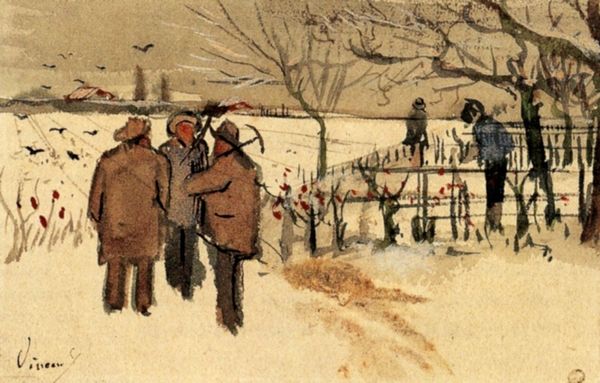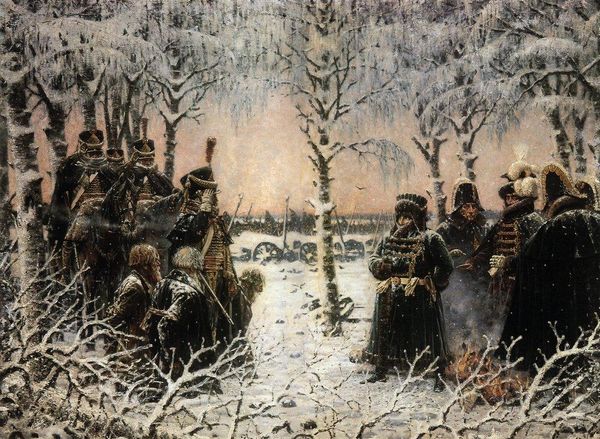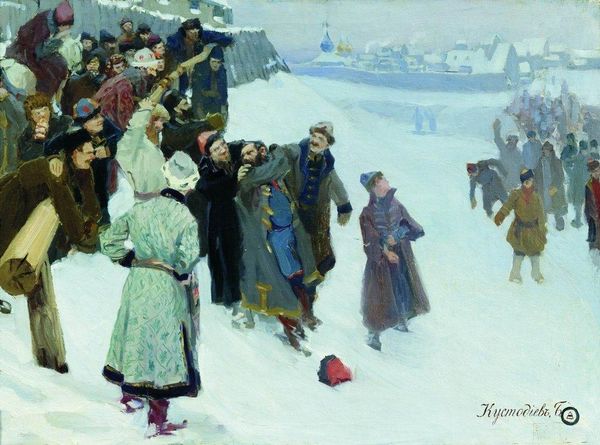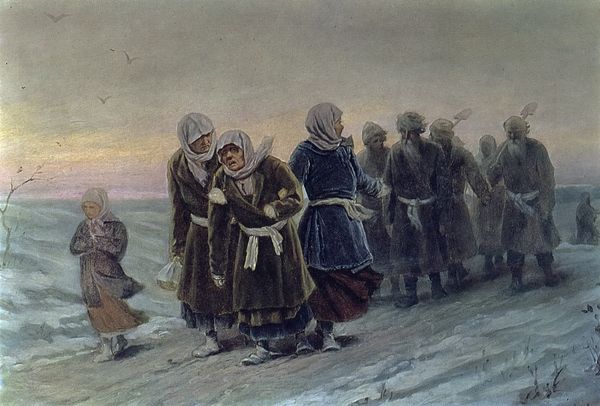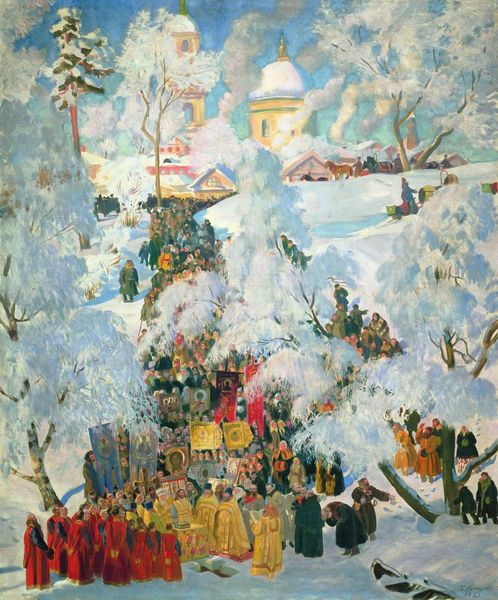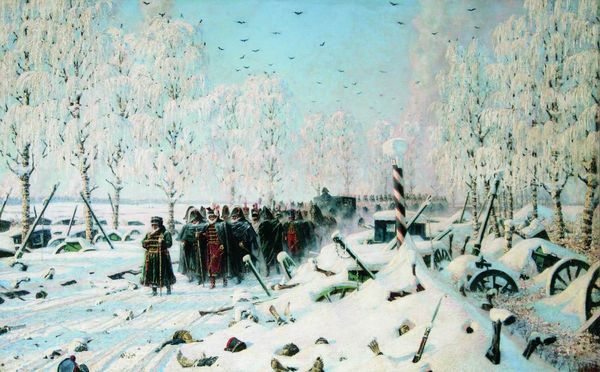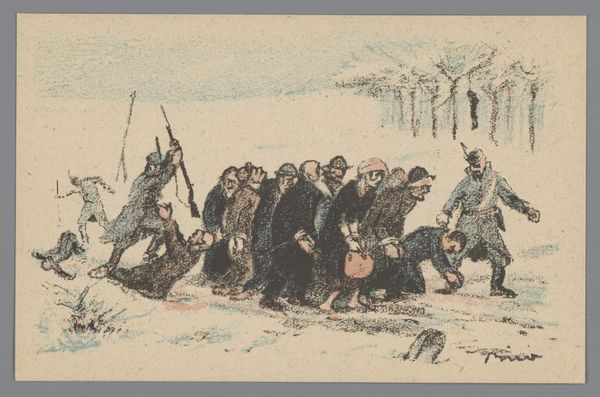
painting, oil-paint
#
portrait
#
painting
#
oil-paint
#
war
#
landscape
#
winter
#
soviet-nonconformist-art
#
impressionist landscape
#
figuration
#
possibly oil pastel
#
social-realism
#
handmade artwork painting
#
oil painting
#
group-portraits
#
genre-painting
#
history-painting
#
street
#
realism
Dimensions: 221.5 x 349.5 cm
Copyright: Pyotr Konchalovsky,Fair Use
Curator: The first thing that strikes me is the winter scene, and these figures huddle together. You almost feel the cold seeping through the canvas. Editor: That’s right. What we’re looking at is Pyotr Konchalovsky’s 1942 oil painting, “Where to Give Blood Here?”—a poignant scene rendered in the depths of World War II. Curator: It feels incredibly human, doesn't it? The soft colors, the everyday setting—despite the lurking presence of war. What do you read into it? Editor: I see a moment thick with unease, perhaps even silent protest. Look at the power dynamics subtly at play—the armed men on horseback positioned at the periphery overseeing this group of women, and the focus on the instructions delivered on what they need to do for the war effort. Their expressions are unreadable, masking their emotions for protection, which speaks volumes to the pervasive environment of fear that shaped life at the time. Curator: The whole scene feels suspended, doesn't it? It's as if they are trying to navigate a surreal and disruptive situation, as if the social order is transforming before their very eyes and everything has become strange and dislocated. The horses certainly lend this feeling of another world invading everyday life. Editor: The war deeply changed Soviet society, transforming women’s roles, impacting everything. The war's impact also reminds us that social transformation comes at an immense cost, with ripple effects that touched individuals, families, and the national psyche for decades. This particular representation reflects the narrative the state would wish to project. Curator: I get that. Thinking of his other works, perhaps Konchalovsky found solace in portraying a scene where resilience and resistance intersect so naturally, a painting capturing that sliver of time so many lived through? Editor: Exactly. "Where to Give Blood Here?" remains a stark, beautiful reminder that even in moments of profound rupture and loss, humanity persists in its quiet struggles and silent defiance. Curator: What a privilege to be able to contemplate its meanings today.
Comments
No comments
Be the first to comment and join the conversation on the ultimate creative platform.
